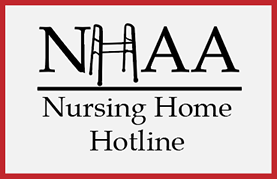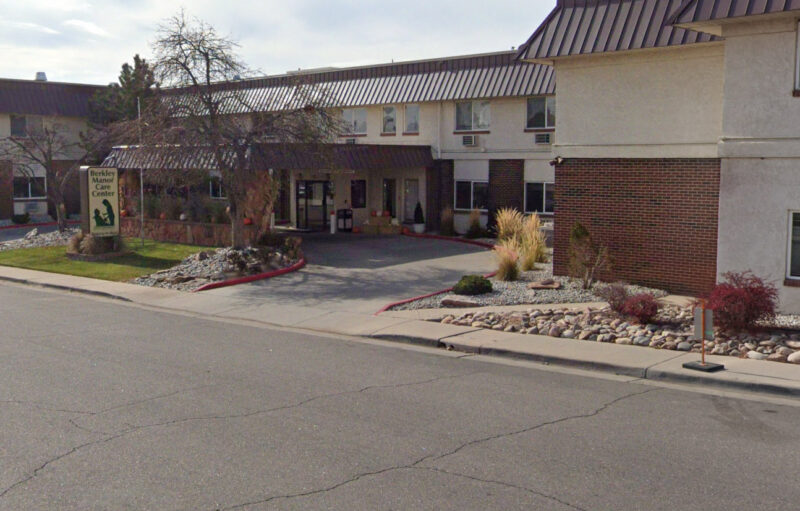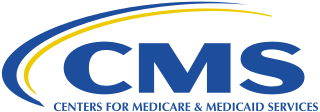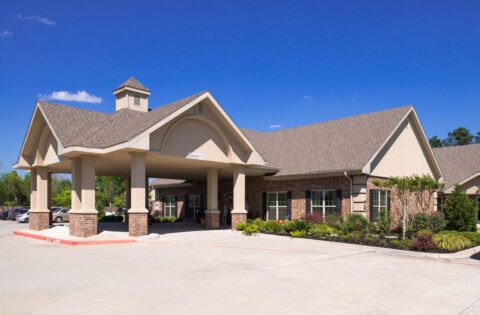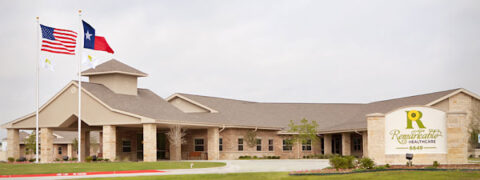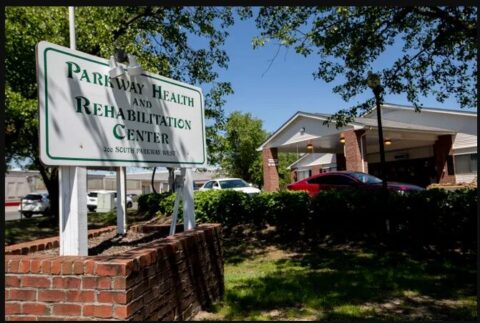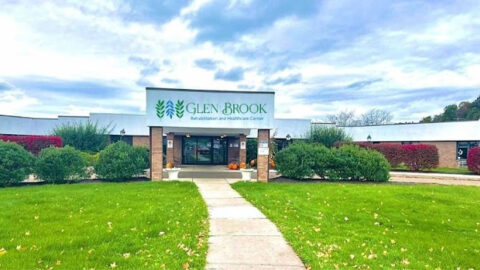State Findings:
Based on record review, observations, and staff interviews, the facility failed to ensure two (#54 and #4) of four residents reviewed for accident hazards out of 34 sample residents, were provided adequate supervision and a safe environment to prevent accidents and the re-occurrence of accidents.
Resident #54 was admitted to the facility on [DATE] with a diagnosis and history of falls. The resident had four falls from 8/23/21 through 4/7/22. The facility failed to implement effective fall precautions with her risk of falling. On 4/7/22 the resident sustained a head injury following a fall which required hospital treatment. The interventions included educating the resident but also documented the resident was not always able to communicate her needs and that she forgot conversations held after a few minutes. The resident had a care plan to wear non-skid socks. During the survey from 8/8/22 to 8/11/22, the resident was observed walking the hallway in nylon material socks that were not non-skid.
In addition, the facility failed to:
-Transfer Resident #4 in an appropriate manner;
-Ensure a tube feeding device was plugged into a medical electrical outlet power strip; and,
-Ensure electric cord was clear of a water source.
A review of the facility fall investigations provided by the nursing home administrator (NHA) on 8/1/22 at 1:27 p.m. revealed Resident #54 fell four times. The resident had an injury during the fourth fall which required the resident to be sent to the hospital. A review of the four falls revealed in pertinent part:
-The 8/23/21 fall report revealed the resident was found lying in the bathroom on her back, wearing only one non-skid sock. The report did not document any predisposing environmental, physiological, or situational factors that were documented on the fall investigation. The report did not contain any interventions that were put in place. The fall was unwitnessed. The resident was unable to give a description of the fall event.
-The 12/18/21 fall report revealed a registered nurse (RN) assessed the fall but only revealed the resident was found on her right side. The report did not document where she was found at the time of the fall, what was the reason she fell , and no other predisposing environmental, physiological, or situational factors were documented on the fall investigation. The report did not contain any interventions that were put in place. The fall was unwitnessed. The resident was combative with staff during the fall assessment by the RN. The resident was unable to give a description of the fall event.
-The 12/21/21 fall report revealed the resident was found on her left side on the floor. The report did not document where she was found at the time of the fall, what was the reason she fell , and no other predisposing environmental, physiological, or situational factors were documented on the fall investigation. The report did not contain any interventions that were put in place. The fall was unwitnessed. The resident was unable to give a description of the fall event.
-The 4/7/22 fall report revealed Resident found lying face down with a chair on top of her, resident is alert but unable to tell what happened, small abrasion on forehead some bleeding noted. Resident was rubbing left hip and crying. The facility called an ambulance to transport the resident to the hospital. The report did not contain the location where the injury took place. The report documented there were no predisposing factors about the fall with injury. The resident was unable to give a description of the fall.
-A follow up fall investigation report for the 4/7/22 fall, written on 4/14/22 (seven days after the fall) was provided by the facility nurse consultant (FNC) on 8/11/22 at 11:49 a.m. revealed in pertinent part, The event time was 3:00 a.m. The resident ambulates without assistance, able to transfer herself, has a history of falls.
Resident was on the floor flat on her back, bleeding from the back of her head. Resident was then assisted to a sitting position, notice a deep laceration on her occipital (back of the head). Pressure dressing applied to stop bleeding. At 3:45 a.m. the resident started vomiting. Ambulance called and arrived at 3:53 a.m.
The current interventions that were put in place at the time of the 4/7/22 fall were to Anticipate and meet the resident’s needs. Assist with activities of daily living (ADLs) as needed, call light within reach. Educate the resident about safety reminders and what to do if a fall occurs. Provide activities that minimize the potential for falls while providing diversion and distraction. Provide appropriate footwear when ambulating non-skid socks provided.
The 4/14/22 follow-up investigation listed the falls for the past six months which were not included on the fall investigations revealed:
-8/23/21 resident was face on floor in bathroom. The section documenting what new intervention was implemented after the fall was left blank.
-12/18/21 resident was face of floor beside roommates bed. The section documenting what new intervention was implemented after the fall was left blank.
-12/21/21 resident was found on (the) floor. The section documenting what new intervention was
implemented after the fall was left blank.
On 8/8/22 and 8/9/22 from 9:00 a.m. until 4:30 p.m. Resident #54 was not wearing shoes. She was wearing red nylon socks which were not non-skid socks. She walked almost continuously from one end of the upstairs hallway to the other. She stopped to talk to residents, walked into her bedroom, and continued to walk without staff assistance. She did not use a walker, cane, or wheelchair while she walked.
Hoyer Lift
On 8/10/22 at 1:43 p.m., the resident was sitting in her recliner chair. Certified nurse aide (CNA) #5 and CNA #9 placed the hoyer mechanical lift sling around the resident. The sling criss crossed between her legs. When the CNA began to raise the lift.
At 1:50 p.m., the director of rehabilitation (DOR) arrived into the room, after CNA #5 had requested her to come into the room. The DOR told the CNAs that a sit-to-stand lift would be used.
She failed to look at the sling which was placed on the resident prior to changing the mechanical lift from a full hoyer lift to a sit to stand.
CNA #9 said the sling for the sit-to stand lift was on top of the resident ‘ s closet. The sling was removed and placed behind the resident. The straps crisscrossed across her breasts. The straps were tight. CNA #5 began to use the lift and the resident was assisted into the standing position.
The resident did not have her hands on the lift, and her arms hung down, as she was lifted. The resident called out that it hurt. The CNAs continued using the lift with the incorrect sling after the resident called out that it hurt and she was placed on the bed. The sling was removed.
CNA #5 said the sling needs to be an extra large sling. CNA #5 looked at the sling which was used, and it was a medium. She said she would locate a large sling. At 2:06 p.m the DOR told the charge nurse that the sit-to-stand lift was the lift to use with her transfers from the bed to chair and vice versa, although she needed an extra large sling.
The director of nursing (DON) was interviewed on 8/10/22 at 4:32 p.m. She said Resident #4 was supposed to be transferred by two staff in the hoyer lift instead the staff used a sit-to-stand lift. She said the staff used a medium sling when they should have used an extra large one. She said it resulted in extreme discomfort to the resident since the sling was too small.
Your Experience Matters
...and we want to hear it.
NHAA is here to assist families, residents, and the community by sounding the alarm on issues like those found above. This nursing home and many others across the country are cited for abuse and neglect.
If you have or had a loved one living in this nursing home or any other nursing home where you suspect any form of abuse or neglect, contact us immediately.
We have helped many already and we can help you and your loved one as well by filing a state complaint, hiring a specialized nursing home attorney or helping you find a more suitable location for your loved one.
You can make a difference, even if your loved one has already passed away.
Please give us a call at 1-800-645-5262 or fill out our form detailing your experience.
Personal Note from NHA-Advocates
NHAA shares with all the families of loved ones who are confined to nursing homes the pain and anguish of putting them in the care of someone else. We expect our loved ones to be treated with dignity and honor in the homes we place them. We cannot emphasize enough to family members of nursing home residents; frequent visits are essential to our loved ones’ well-being and safety.
If you are struggling and upset, click here to understand your options, or contact us through our contact form or call our toll free hot line number: 1-800-645-5262.
